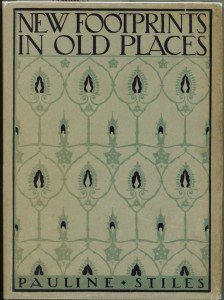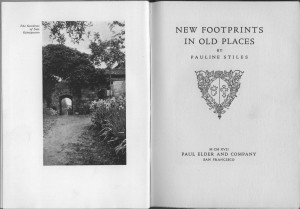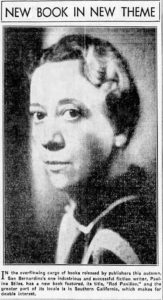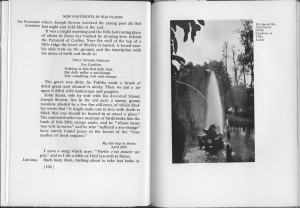
One of the most satisfying things about writing these weekly spotlights is discovering unusual books that are worth reading. Ruth Gordon, who wrote her 1977 Ph.D. thesis on Paul Elder, entitled one chapter “Books Beautiful, Literature Mediocre.” Indeed, many of Elder’s publications are forgotten for good reason. As a group, however, I find Elder’s travel books well worth a look.
Pauline Stiles’s New Footprints in Old Places (1917) chronicles her nine-month holiday in Italy. Nine months! How many of us have the wherewithal to take a nine-month vacation? Stiles was clearly from a well-to-do family. She and her two female companions left New York on 4 October 1913 and arrived in Naples on Friday the 17th. [The Naples-New York steamer route was heavily traveled by Italian immigrants. My grandparents came to America on the Naples steamer in 1910 and 1911. —ed.]
Stiles and her friends spent the next six months based in Rome, with excursions to Florence, Assisi, Pompeii, Capri, and most of the other sites that had become well-established tourist destinations. They left Rome on May 1st on a leisurely journey north, arriving in Paris on June 6th where they stayed for three weeks. Then two weeks in Belgium, spending their last night in Bruges on July 17th:

Bruges is like an old, old etching, with the same dim lights and shadows, and the same uneven lines. It is an enchanting medieval town that has let the years slip over it without ever growing modern. It seems asleep, the houses, the towers, the bridges, the canals flowing by flowering walls, and even the swans that drift upon the water.

The next day they arrived in London, which had been stirred like a hive of bees. On June 28th, Serbian nationalist Gavrilo Princip had assassinated Archduke Franz Ferdinand of Austria in Sarajevo. On July 28, Austria-Hungary would declare war on Serbia, and the first hostilities of World War I quickly followed. On Sunday 2 August, Stiles writes:
We can talk and think of nothing but war. The whirlwind has swept on at incredible speed. Germany has broken the neutrality of Belgium, and France has gone to the aid of her ally, Russia. Everyone wonders what England, as the third of the Entente, will do.
Meanwhile the city is absolutely stunned. Great crowds swarm the streets, buying the latest extras. The air is rasped with the cries of the hawkers, and is electric with excitement.
Towards evening we rode down to Charing Cross. All the French in London were going home to join the army. The men were marching to the trains, waving good-bye to their women; eyes were dry but lips were trembling. A band was playing the Marseillaise. Every hurdy-gurdy in the city is grinding out that stirring tune.

Determined not to change her travel plans, Stiles journeys to Stratford-on-Avon:
The country is swarming with troops. Many horses in all the towns have been taken, and in Warwick every house is filled with soldiers, waiting their orders. Our landlady, Mrs London, entertained us with all the news as she served us our meals of boiled beef, boiled potatoes, boiled beans, boiled everything in her stuffy little parlor. The men are “Reservists” and “Territorials”; she has to take some in and “board and bed them for two shillings per head.” No one knows were the troops are bound for. I wonder if you realize how horrible this war is going to be.
In Liverpool on 26 August 1914, Stiles and her companions board a steamer for New York. Eleven hundred people are crowded onto a ship designed to hold nine hundred. “The ship is packed from top to hold; every place in the steerage taken, and conditions are ghastly down there.” Stiles, however, has the best stateroom on the ship. “Farewell, Old World,” she closes. “I have seen you in all your proud prosperity, at the summit of your civilization. You will never be the same again.”
New Footprints in Old Places was published in August 1917, with the Great War still raging. Many of the Flanders fields that Stiles visited on her way to London had been obliterated. Armistice would not be until 11 November 1918, still over a year in the future.
Pauline Stiles was born in Illinois on 14 March 1885, and moved with her family moved to San Bernadino, California, in 1889. Her father, William H. Stiles, was an obstetrician and was said to have “delivered about 90% of the pioneer valley babies.” After New Footprints in Old Places, she worked in the silent-picture-era Hollywood as a “critic of scenarios.” In 1927, she published her first novel, The Crooked Stick. More novels followed, including Red Pavilion, Lovers Must Live, and Cloud by Day. In 1949, she published Dr. Will, a biography of her father. Pauline Stiles never married and had no children. She died on 28 June 1957 at her home in San Bernadino. She was 71 years old.